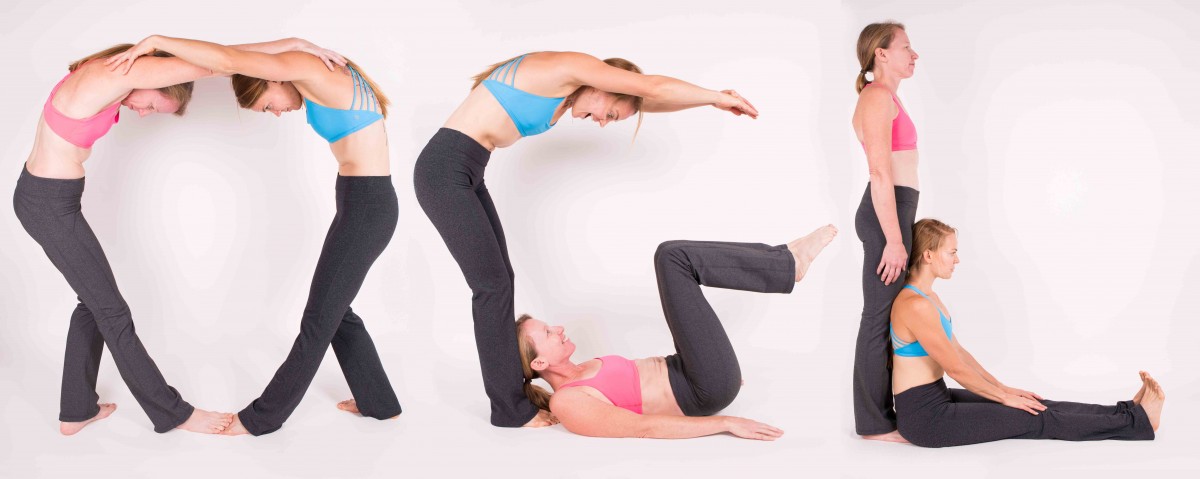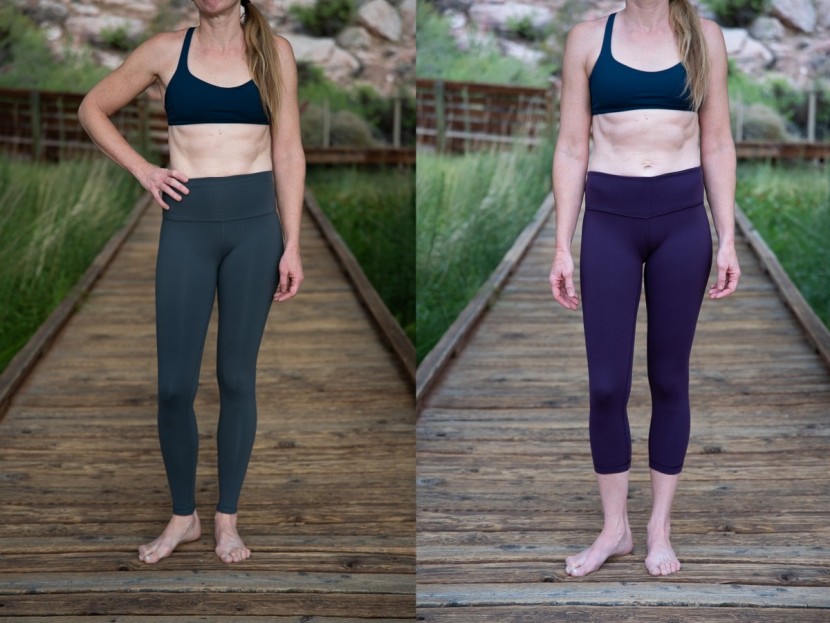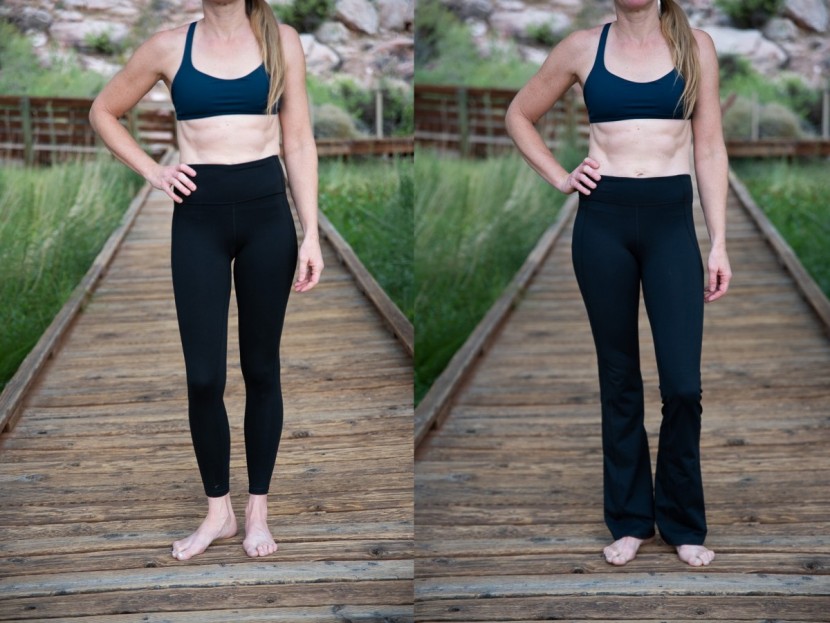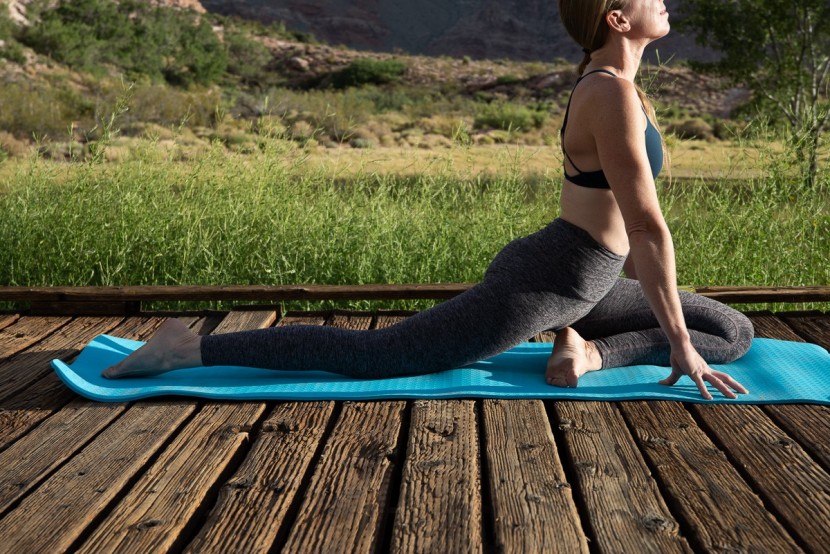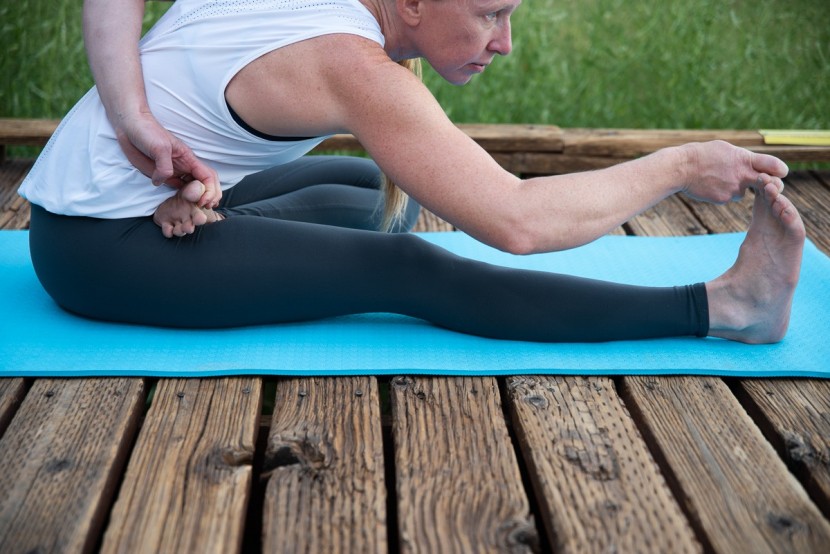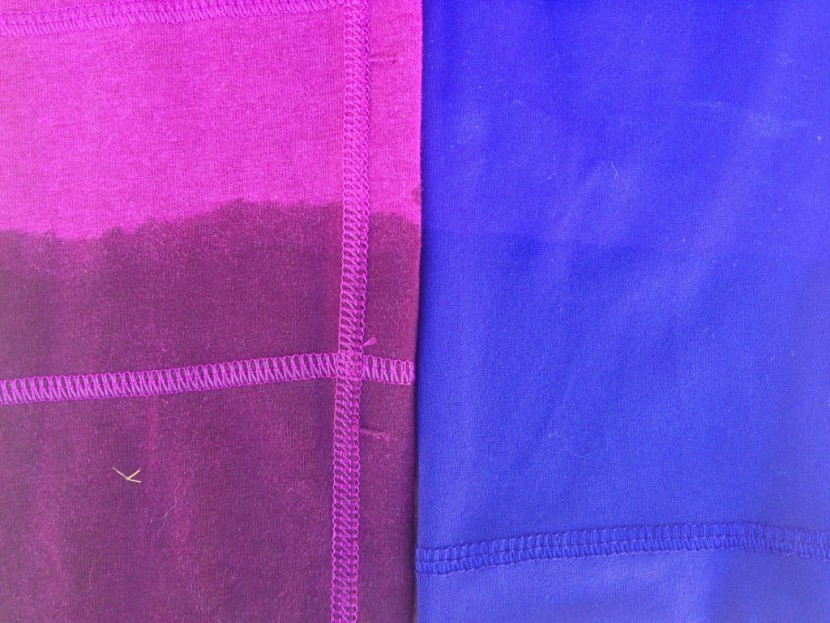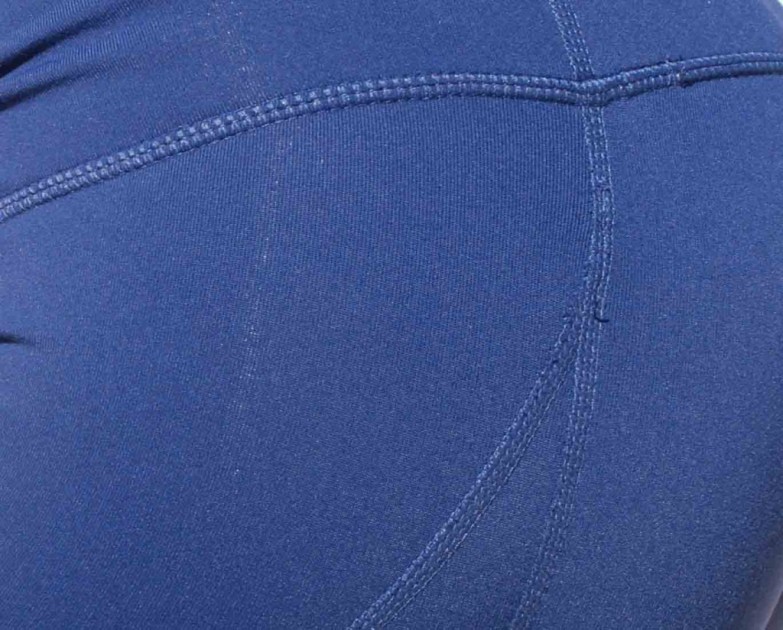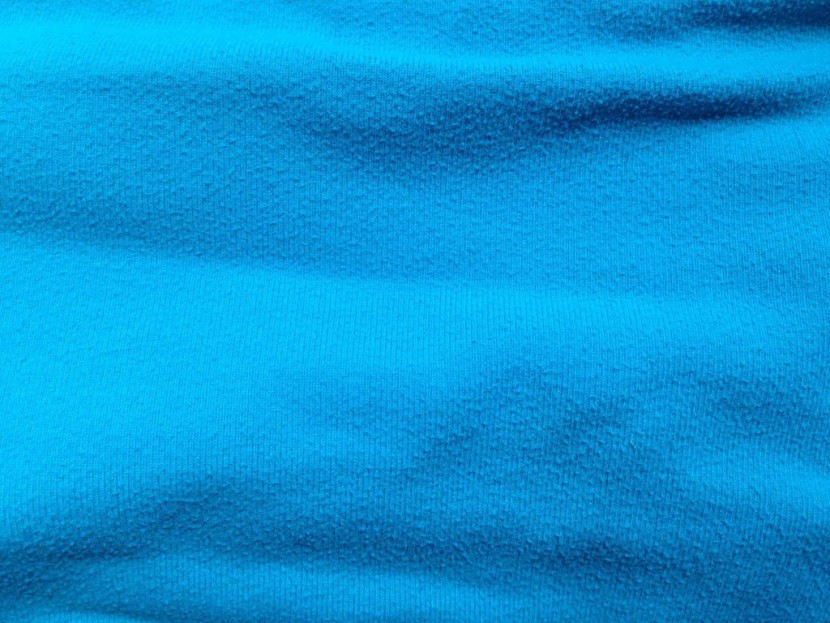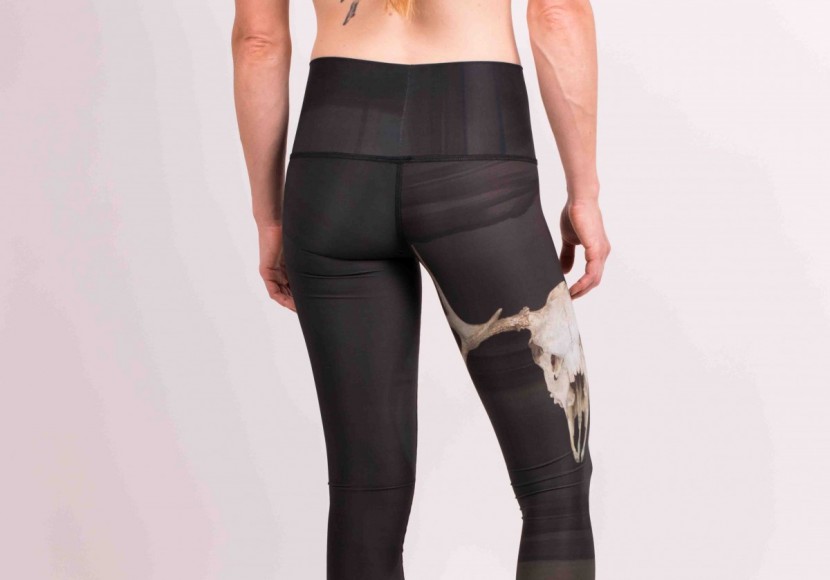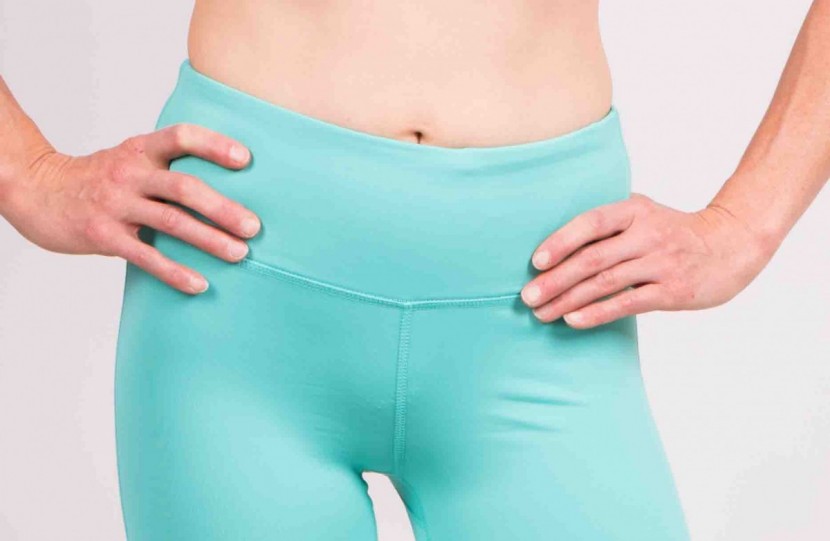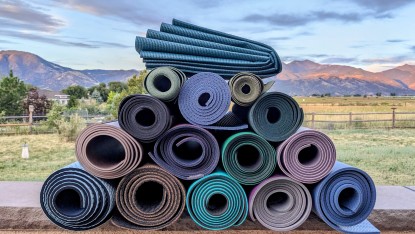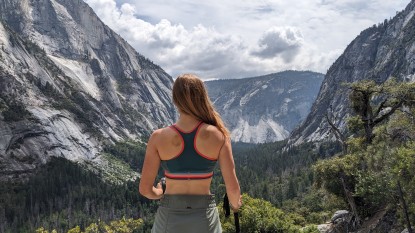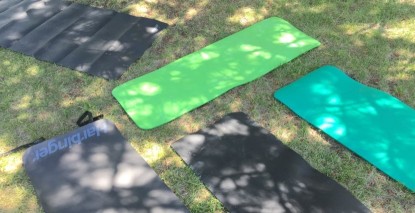New to yoga? A veteran of the practice? No matter your experience level or ability, we're here to guide you through the process leading to an advised purchase decision. To optimize what you get out of your yoga pants, pick the pair that best fits your preferred style of practice. Our expert testers and authors have decades of combined experience in practicing and teaching many styles of yoga. Yet, even they picked up new knowledge on yoga apparel during our head-to-head testing process. Keep reading this article for tips and considerations for making a purchase decision on your next favorite yoga pants. We will guide you through various styles, materials, designs, and features you might want (and some to avoid!).
Length and Style
When selecting a pair, the first consideration you need to make is what length and style are best for you and the type of yoga you practice. No one wants their poses impeded by their clothing, nor do they want to wear something unflattering or uncomfortable.
Full Length vs. CapriWe tested a variety of full-length and capri models in this review. Capris end somewhere below the knee to mid-calf, or around a 19-20 inch inseam. Whether you prefer to practice in long pants vs. capris or shorts is a matter of personal preference, as well as the climate you live in and the type of yoga you practice. Hot yoga practitioners often wear as little as possible in their heated studios. However, you're not leaving your house in shorts or capris in the middle of winter. Many models are available in various lengths, including the options for capri or full-length.
Straight or Flared leg vs. Leggings
The cut of your pants is entirely up to personal preference. Some people don't like the look of leggings and opt for straight cut or flared legs. Others prefer the feel of leggings during strenuous classes as there is less material flapping around. Some like to mix and match, practicing in leggings but wearing flared legs when running errands or lounging around the house. You've probably already made up your mind as to which way your preferences lie, and luckily there are great options available on both sides of the debate.
When it comes to the type of practice you do, we have some tips for buying the perfect pair to complement whichever style you prefer.
Gentle Hatha or YinIf you prefer your yoga calm and gentle, then comfort and fit are likely your top priorities. Look for looser cuts, full-lengths, and soft materials (including cotton or cotton-blends). When holding a pose like Pigeon Pose for upwards of five minutes, you don't want something confining or constricting in the thighs and hips.
Basic Yoga
If you practice “Level 1” type classes with various poses but nothing too complicated, any leg design will work. Most tight leggings have enough stretch that they won't feel restricting, and some extra fabric around your calves and ankles likely won't get in the way if you choose to go with a looser pair.
Vinyasa, Ashtanga or Other Vigorous StylesWhen performing a dozen or more Sun Salutations and a vinyasa between every pose, you'll want a pair that is streamlined and breathable.
Hot Yoga
If you like your yoga extra sweaty and hot, you need to dress for success. In this case, less is more. Look for shorter capris or “booty” shorts that give your skin its maximum opportunity to breathe. Some of the models that we tested have short options. You also want to pay close attention to the texture and fit of the fabric, as you do not want to find yourself constantly pulling them up during class.
Materials
There are three options in terms of materials: cotton, synthetics, and cotton-synthetic blends. There are pros and cons to each one.
Cotton
Cotton is considered a “natural fiber,” as it is grown rather than manufactured from plastic-like synthetic materials. Properties include:
- Soft feel
- Resistant to pilling
- Sheds pills when they do form
- Moisture absorbing
- Not as breathable as synthetics
- Prone to fading
Synthetics
There are many different synthetic fibers used in yoga pants. The most common ones are polyester, nylon, and spandex. You might see terms like “Lycra” spandex or “Supplex” nylon, which are trademarks of a specific type of this fabric. Synthetic materials are known for their:
- Moisture-wicking properties
- Propensity to pill
- Shape retention
- Stronger smell after sweating in them
- Not as soft as cotton against the skin
Cotton-Synthetic Blends
After reading the above lists, you'll notice that each fabric has positive and negative attributes. We'd love a pair that combines the soft feel of cotton with the moisture-wicking and breathable properties of synthetics without the stink or pills! Unfortunately, when combining the two in cotton/synthetic blends, you end up with a little bit of everything. While we've tested cotton-synthetic blends in the past, we left them out of the review this time as we have yet to find a pair that performs well. Material engineering is steadily improving, though, so you never know what the future of these blends holds; in the meantime, the best option is synthetic.
Why is synthetic best?If you look at any endurance athlete or mountaineer, you'll notice that their gear is typically all synthetic. Cotton Kills is even a popular catchphrase. We don't need to worry about a pair of cotton yoga pants being the cause of our demise in a yoga studio (that headstand you're trying without proper alignment is more likely to do it!). However, we can learn a lot from extreme athletes about performance fabrics.
Synthetic materials ventilate your moisture faster than cotton, and they are quick to dry. These are two key considerations for staying comfortable in class and avoiding sweat marks. However, that can still occur depending on your color choice (see Colors and Prints below). Unlike cotton, these fabrics are shrink resistant, and the addition of spandex (otherwise known as Lycra or elastane) lets them stretch without deformation. However, we are still left with the issues of exceptional stinkiness and pilling. When it comes to the odor issue, scientists have discovered that Micrococcus bacteria thrive on the unique structure of synthetic fibers. When they digest the fatty acids in our sweat, they produce a more noxious compound than the bacteria in cotton fibers. Manufacturers are trying to create “odor-control” treatments, such as silver chloride, that act as a bacterial deterrent and eliminate odors. Alternatively, special detergents are available to help de-stink your synthetic layers.
PillingAlthough no one likes to smell, probably the most significant issue when it comes to yoga pants and their longevity is the dreaded “pill.” A pill is a small ball of fiber that appears stuck onto the fabric. They are formed through abrasion or wear — picture your inner thighs rubbing against each other or your behind sliding on a yoga pant. The friction loosens some fibers, which form tiny balls on the material's surface. These balls have an “anchor fiber,” which holds the pill onto the fabric. In cotton material, the fibers are weak and fall off, but synthetic fibers are strong and hold onto this excess. Early pilling can destroy the look of your yoga pants, making them seem old and worn out, even if they are relatively new.
The sad thing about pills is that there is little to do about them once they form, save shaving them off one by one. Your best option is to look for fabrics with a tighter knit and take proper care of your garments.
CareThere are some tried and true methods of increasing the longevity of your yoga pants and reducing the amount of pilling.
- Wash them inside out and only with similar synthetic fabrics to avoid them rubbing against a harsher material (like jeans) in the washing machine.
- Don't overload your machine.
- Use small amounts of fabric softener, but not too much as it might impede the wicking properties of the garment. If you are worried about chemicals in fabric softeners, there are “natural” options available.
- Line dry your pants when possible.
All clothing has a lifetime, though, and eventually, even the most well-engineered material breaks down. Here's an excellent opportunity to practice one of the core principles of Yoga: Vairagya, or non-attachment, and let your old pants go.
Features
Manufacturers add different features to their yoga pants, some we like and some we don't.
GussetsGussets are triangular or diamond-shaped inserts sewn into the crotch. A gusset insert alleviates the issue of having a single pressure point where four seams run together (right where you don't want it), and it also helps to disperse the stress around the crotch seams making your yoga pants more durable. While all of the tested models have gussets, they vary in their design. Some use the same material as the rest of the pant, and others offer an extra layer of material for those who prefer to go without underwear. Some are diamond-shaped, and others are triangular, but we couldn't tell the difference between the two. Regardless of the material or shape used, you want a pair with a gusset for comfort and range of motion. Be sure to inspect that area before you buy your next pair, or check the specs when online shopping. While most models seem to be made with them these days, you'll be uncomfortable if you end up with a pair that doesn't have one.
Key Pockets
Why do yoga pants have key pockets? Who wants to keep anything in their waistband when bending and folding like a pretzel? You'd be surprised how often pockets come in handy, and if you ever run errands after class or wear your yoga pants for other activities, you probably already appreciate it. Maybe you put your house key in there when you go to walk the dog; you're staying in a hotel and need someplace to keep your room's key card when working out in the gym; you're dashing off to the store and want to slip a $20 in your pocket. However, none of these activities have anything to do with yoga, and for yoga-intensive purposes, a pocket is unnecessary. That said, having a pocket and not needing it may not be a big deal if it is discreet and easy to ignore. Some pockets are so well hidden, you could wear the leggings for weeks before realizing they had a key pocket. Sometimes, styles have a pocket that isn't well integrated, creating a bulky and uncomfortable lump in the waistband. Luckily, designs have only improved over the years, and the best yoga leggings have pockets that blend seamlessly with the rest of the leggings and are hardly noticeable.
Colors and PrintsIf you're like us, you're bored of wearing the same pair of black leggings to yoga class day in and day out. Fun colors and patterns allow us to express some individuality and style on the yoga mat or wear them for other things besides yoga. However, through our testing process, we discovered why black is such a popular color when it comes to yoga pants - it masks any signs of sweat! (They can also be worn outside of the studio and dressed up or down). If you've ever worked up a sweat wearing the wrong pants during your practice, you know why this is important. Depending on material content and breathability, lighter colors often have more noticeable sweat stains than dark colors by the end of your session. Keep that in mind, particularly if you have a vigorous practice or know that you sweat a lot.
As for prints, we love mixing things up with bright flowers, trippy designs, or other colorful options; however, we've seen some unsuccessful ones out there. One pair we tested featured a deer skull that was just downright creepy, and the antlers reached up on either side of the legs and appeared to be poking us in the crotch. Not the best look! Typically, we recommend choosing a darker pair so you can avoid the dreaded sweat stains; however, if sweat stains do not bother you, or you're set on a particular print, we say go for it.
Seaming
Manufacturers will sometimes add seaming details to the legs and rear to help accentuate certain areas. We liked the effect of some of the leggings we tested and found it can give a nice shaping effect to our bottom. However, in some lower-quality pants, the seams may feel uncomfortable or leave marks on the skin. So keep that in mind when trying on a pair with lots of seams and darts.
Waistband & RiseIntricate waistbands or roll-down tops are one-way manufacturers try to add some style elements to their designs, but be careful that there's not too much extra material around the waist. It might bunch up and get in the way of a deep forward fold. Plainer is better in this case. Rise is entirely up to your preference. Some love an ultra-high waist that holds everything tight, while others find the style too restricting and prefer mid to low rise pants. Yoga typically involves many bends and twists, so many manufacturers err on the side of high to avoid potential wardrobe malfunctions.
Final Thoughts
As the popularity of yoga and the yoga apparel industry grows, it's easy to get caught up in the fashion aspect of the practice. Yoga is about experiencing one's true self, regardless of what you have on, and achieving liberation from the cycle of birth and death. In the end, the best yoga pant is the one that allows you to move uninhibited through your flow; however, it can't hurt to look OHMazing while doing so.

